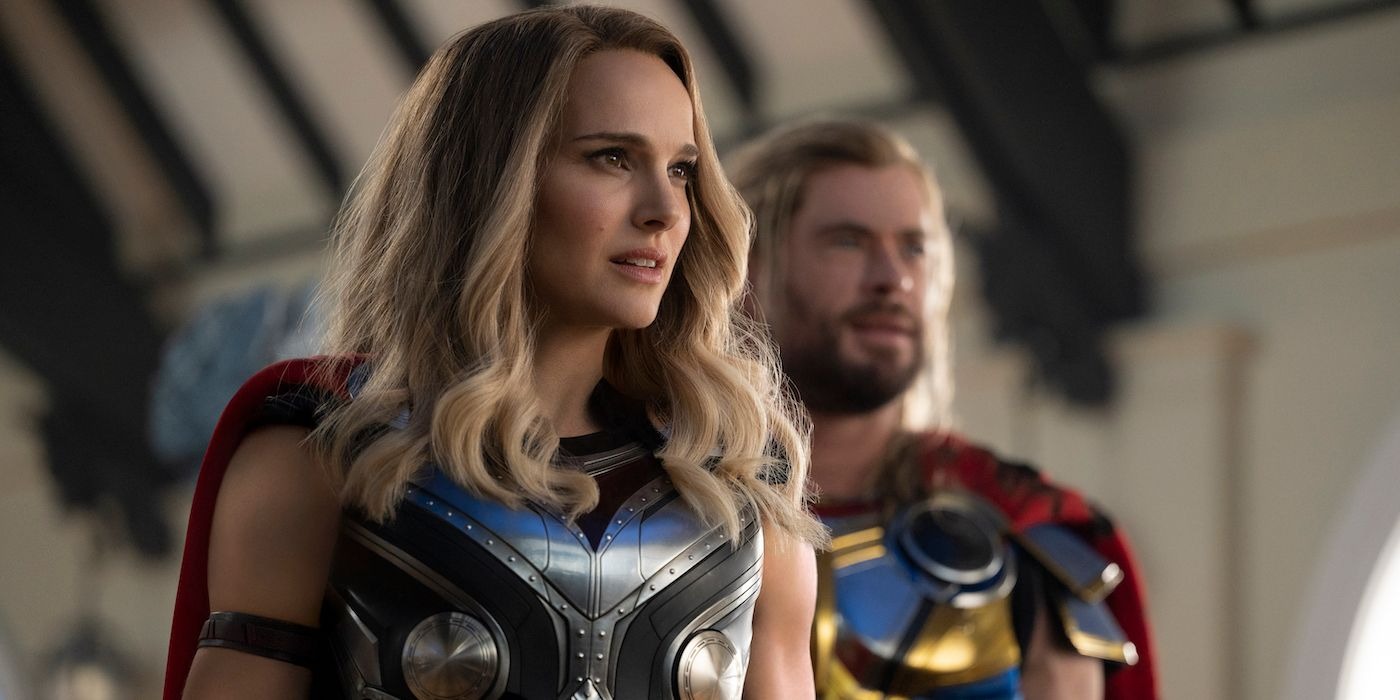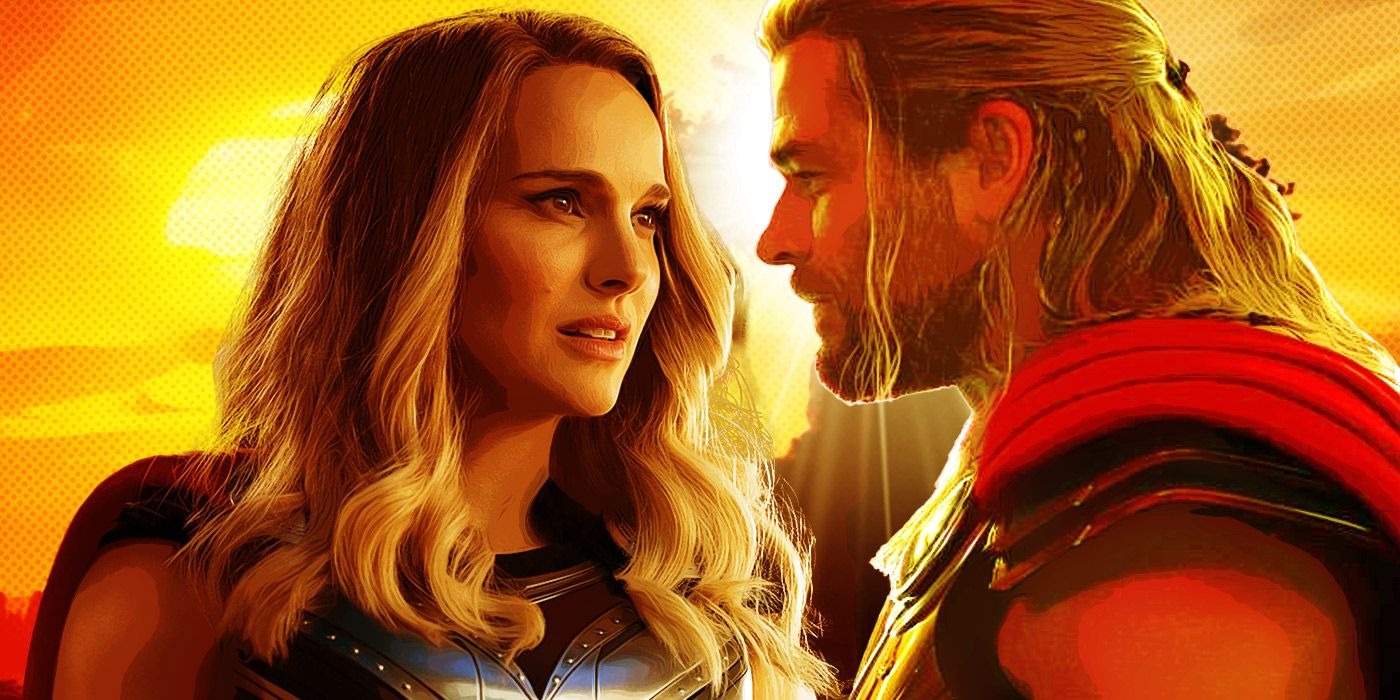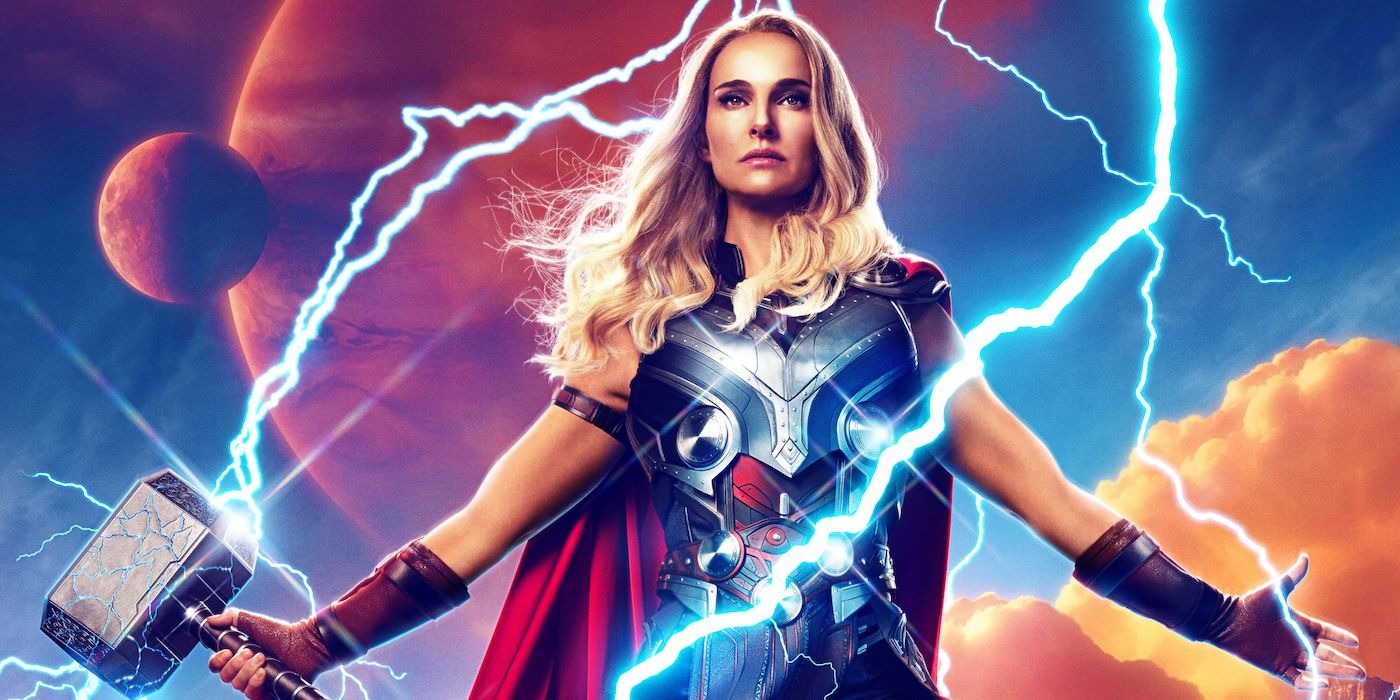Thor’s fourth solo outing in the Marvel Cinematic Universe, Thor: Love and Thunder, doesn’t just round off a chapter in his story but instead sets up fresh directions for the character going forward. Even though there was a long gap between Thor: Ragnarok in 2017 and this 2022 film, the character remained active within the franchise.
They were playing key roles in both Avengers: Infinity War and Avengers: Endgame. So, Thor: Love and Thunder builds on that momentum to push his story further. The film begins with Thor (played by Chris Hemsworth) still journeying with the Guardians of the Galaxy, as seen after Endgame.

But when he hears that Sif (Jaimie Alexander) and other gods are under attack, he makes his way back to New Asgard. On arrival, he’s surprised to find Jane Foster (Natalie Portman), his former partner, now wielding Mjolnir and acting as Mighty Thor.
Their reunion is cut short by a crisis—Gorr the God Butcher (Christian Bale) has abducted Asgardian children. In response, Thor teams up with Jane, Valkyrie (Tessa Thompson), and Korg (Taika Waititi) to stop Gorr, who intends to reach Eternity and use his wish to eliminate all gods.
Thor: Love and Thunder Ending – What Takes Place?
The conclusion of the film sees Thor heading to Eternity by himself after discovering that Jane’s continuous use of Mjolnir is worsening her cancer and weakening her. While on this mission, Thor manages to rescue the kidnapped children and temporarily grants them powers similar to his own.
With the children assisting him, they battle Gorr and his dark creatures to stop him from activating the Bifrost with Stormbreaker and making his wish. At one point, Thor is overpowered and nearly falls victim to the cursed Necrosword.
Jane, as Mighty Thor, then shows up in time and harnesses the renewed strength of Mjolnir to destroy the Necrosword. Although Stormbreaker is freed, Gorr still manages to access Eternity. He prepares to use his wish to wipe out the gods, but the combined efforts of Thor and Jane convince him to bring his daughter back instead.
Jane dies shortly after, and since the Necrosword’s destruction ends the magic that sustained Gorr, he dies as well. The film’s final scenes show Thor now raising Gorr’s daughter, named Love.
The mid and post-credit scenes hint at what’s next—Zeus has survived and sends his son Hercules (Brett Goldstein) after Thor, while Jane is shown entering Valhalla, welcomed by Heimdall (Idris Elba).
How Jane Manages To Reach Eternity’s Gate
The film emphasizes space travel, particularly the importance of the Bifrost in accessing Eternity. That makes it less straightforward how Jane arrives at the final battle. Earlier in the story, it’s explained that Valkyrie’s winged steed can open portals across great distances.
Although the horse isn’t ideal for transporting a full team, it’s effective in getting Jane to Thor’s side just in time.
Is Mighty Thor Gone for Good?
Jane’s passing in the movie draws parallels with Odin’s death in Thor: Ragnarok, which wrapped up Anthony Hopkins’ time in the role. While this could suggest that Natalie Portman’s time as Mighty Thor is over, the post-credit scenes and comic book references suggest there’s still a possibility she may return.
In Marvel comics, Thor once refused to accept Jane’s death and used Mjolnir alongside Odin’s energy from Valhalla to revive her. Additionally, there are comic book storylines where Jane returns in a new form—she becomes a Valkyrie and gains more influence over matters of life and death.
The appearance of Jane in Valhalla with Heimdall hints that both characters might be revisited in future Marvel entries, especially given that Valhalla, in Norse mythology, serves as a place where warriors await another call to action.
Can the Power of Eternity Be Accessed Again?
Before this movie, Eternity hadn’t been mentioned in the MCU. In Marvel comics, Eternity is portrayed differently, seen as a powerful cosmic being ranked just below the Living Tribunal.
The film introduces a rule stating that whoever reaches Eternity first will be granted a wish, presenting Eternity more as a passive force than its comic counterpart. Based on how the rule is described in the movie, Eternity only grants one wish to the first being that gets there, suggesting it may no longer be accessible.
Still, the door to Eternity has been opened, and there’s a chance the entity may now act of its own volition. Eternity and Infinity are frequently associated with characters like Galactus in the comics, which means this development could open the door for Galactus to appear in the MCU.
Who is Love – Thor’s New Companion – And Could She Be Singularity?
After Gorr asks Eternity to bring his daughter back, the child is revived. But her reflection resembles Eternity more than it does a normal girl, and she now possesses some unusual powers.
This development has led many to speculate that Love may not simply be Gorr’s resurrected daughter, but rather Marvel’s version of Singularity. In comic books, Singularity is a cosmic being who appears as the result of a multiverse collapse and ends up in Arcadia on Earth-16191.
Though she takes the form of a young girl, Singularity is a sentient pocket universe with abilities such as teleportation, time manipulation, and flight. While the MCU’s portrayal of Love shows some differences, it wouldn’t be the first time Marvel altered a character’s origin or powers on screen.
Love’s future role in the franchise remains open, but she’s been associated with other Marvel heroes in the comics, such as Kamala Khan (Ms. Marvel).
Why Thor Chooses Mjolnir Over Stormbreaker At The End
The dynamic between Thor, Mjolnir, and Stormbreaker is played for humor throughout the film, especially in the scenes where Thor feels jealous that Mjolnir now responds to Jane. However, there’s more to his final decision to use Mjolnir and hand Stormbreaker to Love.
Mjolnir represents more than just power—it’s tied to Thor’s relationship with Jane and his inner struggle with losing her. Using Mjolnir in the last act allows Thor to honor Jane’s memory, showing how her influence helped him grow as a person and become more deserving of the hammer’s worthiness test.
Giving Stormbreaker to Love further cements this personal change and the symbolic passing of one responsibility while embracing another.
What Jane Says To Thor Before She Dies
Just before Jane fades away and appears in Valhalla, she shares her final words with Thor. After trying and failing to come up with a memorable catchphrase earlier, she finally whispers one that Thor reacts to positively, calling it perfect.
The film doesn’t reveal what exactly she says, but this moment mirrors a comic book scene involving Thor and Nick Fury. In the “Original Sin” storyline, Fury whispers something to Thor that causes him to become unworthy of Mjolnir, and much later, it’s revealed to be “Gorr was right.”
The scene with Jane acts as a reversal—rather than creating doubt, her words affirm Thor’s growth and his renewed worthiness. If Jane ever returns, that final whisper may hold a deeper meaning.
Zeus Sends Hercules After Thor
During a confrontation in Omnipotent City, Thor attacks Zeus and appears to kill him with his own Thunderbolt. However, the film’s first post-credits scene shows that Zeus survived and now wants revenge.

He sends Hercules, played by Brett Goldstein, to eliminate Thor and remind people to fear and respect gods rather than glorify heroes. While this plot wasn’t lifted directly from the comics, there is a point where Hercules clashes with the Avengers but eventually becomes one of them.
Zeus exiling Hercules and encouraging conflict with Thor might be laying the foundation for a similar story arc in the future.
Why Jane Earns A Place In Valhalla
The film’s second post-credits scene shows Jane entering Valhalla, which might cause some questions since the movie had earlier said only those who die in battle can enter.
Though Jane passes away after the physical fight with Gorr ends, she is still involved in convincing him to change his wish—an emotional battle that contributes to the final outcome.
This act is considered worthy and fits with how the comics have previously shown other non-Asgardians, like Frank Castle and Flash Thompson, gaining entry to Valhalla. Curiously, Odin and Loki don’t appear with her, but this absence might be part of a future plot twist.
In some comic versions, Odin arrives in Valhalla to find it eerily empty, and that story might be adapted later on.
What Thor: Love and Thunder Tries To Show
While several MCU Phase 4 films end on darker notes or reflect on grief and struggle, Thor: Love and Thunder leans more towards hope and personal healing. Thor has long been dealing with the emotional impact of past losses, especially what he faced during the battle against Thanos.
On the other side, Gorr is driven by his grief over losing his daughter, which pushes him toward a path of vengeance. By the final act, both characters are given a moment of clarity—Thor chooses to be with Jane in her final moments instead of continuing the fight, while Gorr opts to bring back his daughter instead of pursuing destruction.
The movie points toward love and compassion being more powerful than rage and violence, marking a clear progression in Thor’s character from a reckless warrior to a more thoughtful protector.



